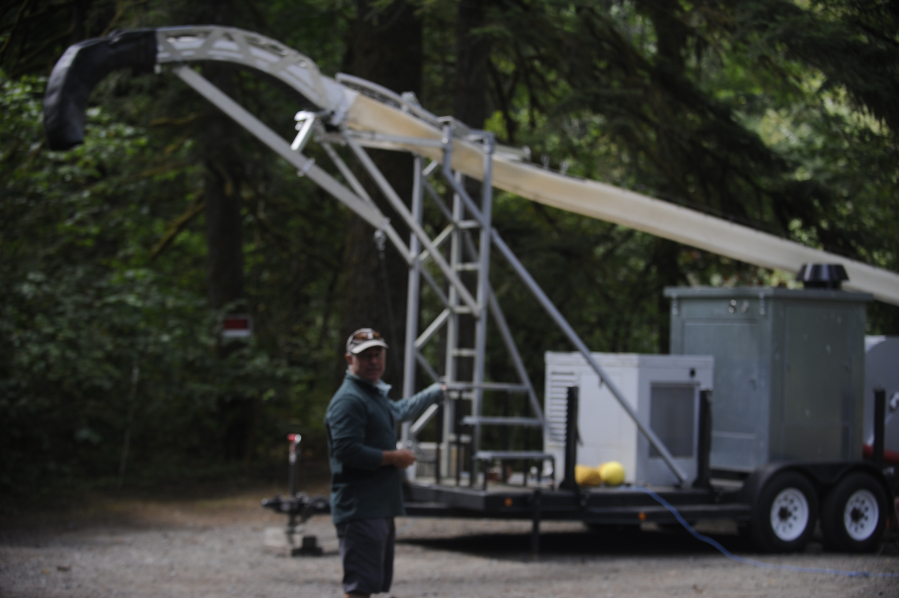It’s been eight years since the state of Washington installed a strange-looking, fish-capturing contraption known as a fish weir about eight miles up the Washougal River.
The fish weir was designed to capture spawning salmon and steelhead. State biologists release the steelhead and native salmon from the weir, but the hatchery salmon are sucked up from the weir into what looks like a giant vacuum cleaner.
A “whoosh” system sucks the hatchery fish down a long tube made of fabric, spitting the flopping fish into a tanker truck that immediately takes them upstream to the Washougal Salmon Hatchery, where they are put in a holding pool until they are processed for eggs.
State officials installed the weir to keep hatchery salmon from clogging up sensitive gravel-spawning grounds along the upper Washougal River so native fish populations have the room they need to recover.
“The weir provides an opportunity for us to intercept some hatchery-origin Chinook and prevent them from subsequently spawning with natural-origin fish,” said Matt Gardner of the Washington Department of Fish and Wildlife (WDFW). “WDFW is required by the National Marine Fisheries Service’s Mitchell Act Biological Opinion to operate weirs for this reason.”


